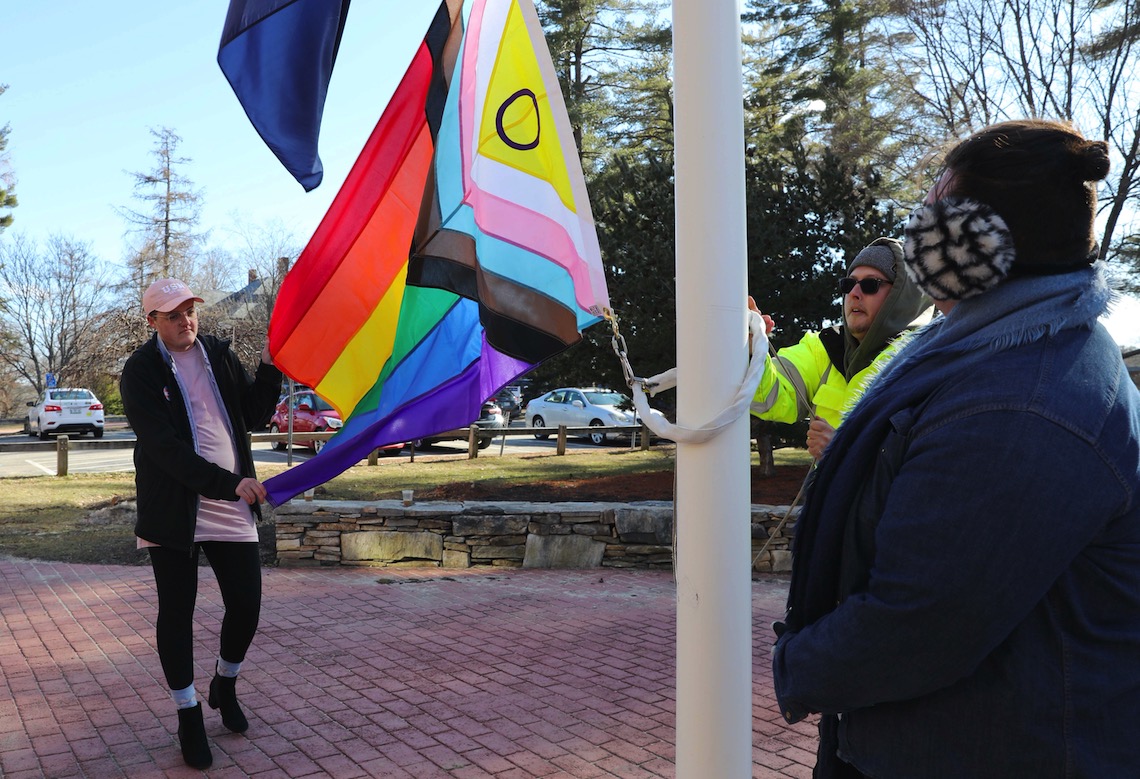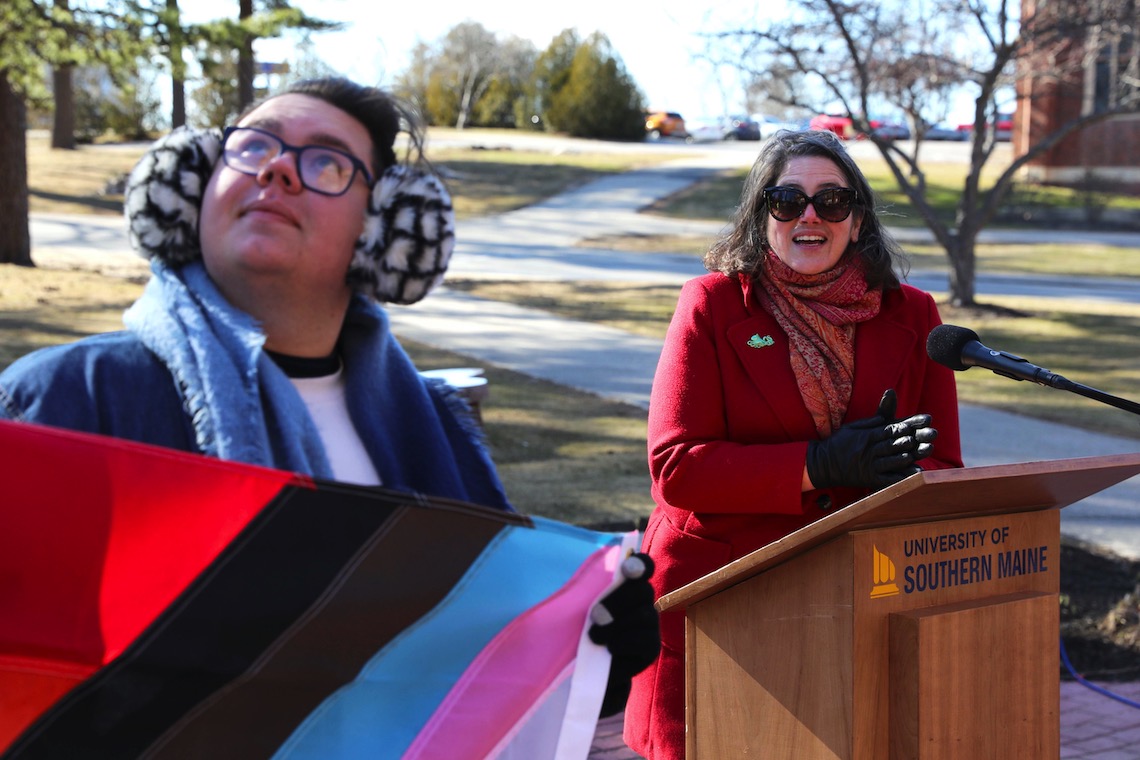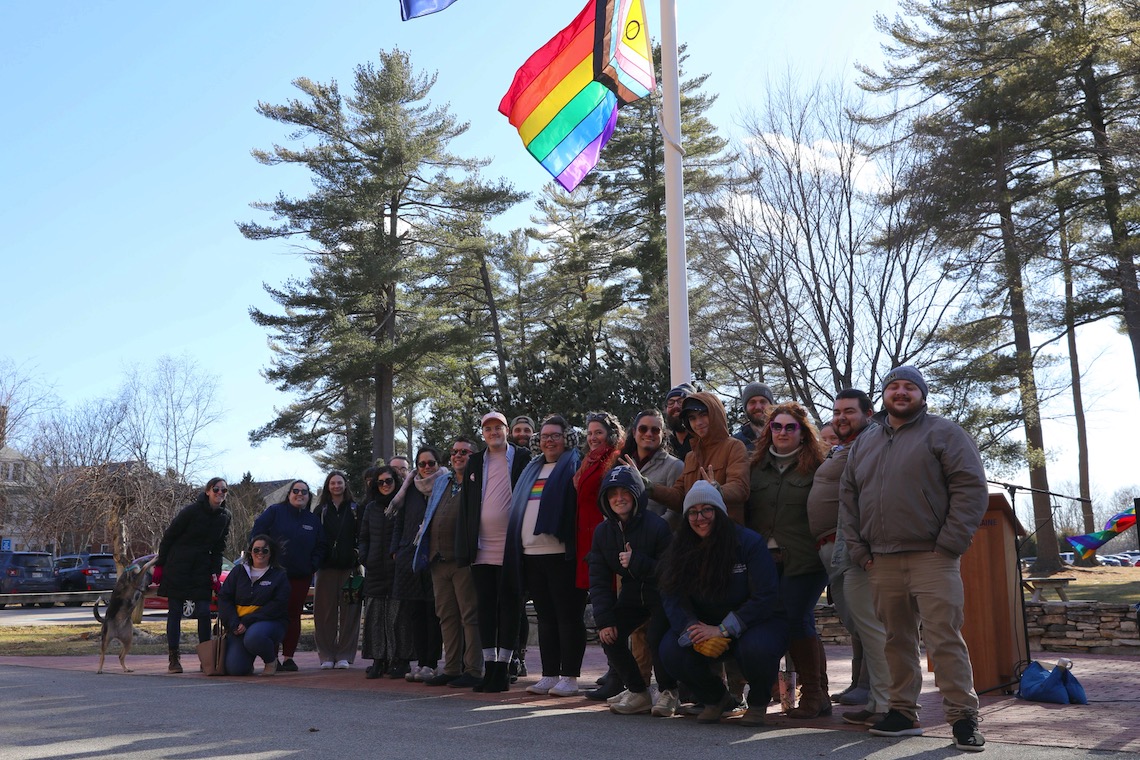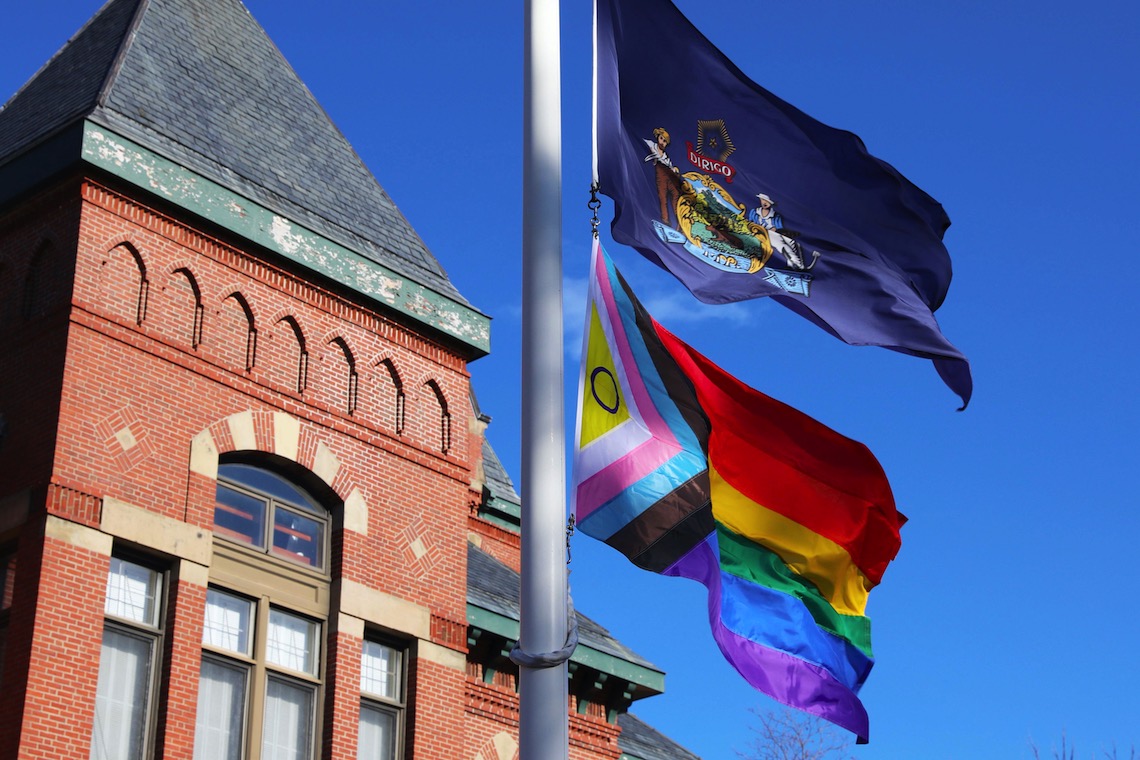
A crowd of onlookers smiled through chattering teeth as a driving wind unfurled the flag they had come out see.
The Intersex-Inclusive Progress Pride Flag made its official debut at the University of Southern Maine in a ceremony on March 30 at the flagpole outside Corthell Hall in Gorham. Around the same time, identical flags also went up at the campuses in Portland and Lewiston.
“It was so emotional and I’m still emotional. It just means so much to have that representation, and to be proud of who I am, the community that I’m a part of,” said Bryan Spaulding, one of two students who spoke at the ceremony. He’s a junior Theatre major and a frequent performer in campus drag shows.
Spaulding is also a board member of the Queer Straight Alliance (QSA). The organization led the charge to bring the flag to campus. In crafting the proposal, one consideration in particular stood out. Which flag to choose?
The origins of the rainbow flag as a symbol of the LGBTQIA+ community date back to 1978. Gilbert Baker designed the first flag for a gay pride parade in San Francisco. Each of its eight horizontal stripes were a different color. Two stripes were soon dropped and the refined six-stripe design became the worldwide standard.

Additional variations arose to recognize different segments of the LGBTQIA+ community. The Intersex-Inclusive Progress Flag includes a chevron with elements symbolizing people who identify as intersex or transgender, as well as people of color. The framers of USM’s flag proposal chose this design as the most inclusive option.
QSA received support and guidance toward its goal from the LGBTQIA+ Faculty/Staff Group, represented at the ceremony by Sarah Holmes. She was active in the student side of the LGBTQIA+ community as an undergraduate in the mid-1990s. Now Assistant Vice President of Student Affairs, Holmes welcomed the flag as a sign of progress.
“It represents the fact that we are all part of this integral, important, beautiful community,” Holmes said. “It signifies the values we have to support everyone who is part of our community. I think I said ‘community’ 12 times, but that’s really what I believe.”
Holmes was the last speaker before the big moment. The anticipation was further heightened by a cold snap that made it hard to stay outside for too long. The severe wind chill made an already chilly temperature of 37 degrees feel even colder. A member of the grounds crew shook off any numbness in his fingers as he secured the flag and raised it skyward.

University President Jacqueline Edmondson cheered along with the rest of the crowd as the flag went up. When QSA came to her with their request, she was quick to give her approval. Soon afterward, the Office of Intercultural Student Affairs allocated the money for the flag and a date was set for the ceremony.
“It symbolizes so much to so many people,” Edmondson said. “The University of Southern Maine is a place where everyone is welcome and everyone can thrive. And this is further evidence of that.”
The Intersex-Inclusive Progress Pride Flag flies beside three other flags. The U.S. flag is positioned at the highest level, with Maine’s state flag and the POW/MIA just below.

That arrangement of all four flags will continue through April for Campus Pride Month, at which time the Intersex-Inclusive Progress Pride Flag will come down. It will go up again for Portland Pride on June 17, Gorham Pride on June 24, and National Coming Out Day on October 11. The cycle will begin again next year with a flag raising for Transgender Day of Visibility on March 31.
The first flag raising will also be the only one for Kip Foster as an undergraduate. He’s wrapping up his senior year in the Social and Behavioral Sciences program. Foster spoke at the ceremony and he was the last person to touch the flag before it left the ground. He felt reassured at the sight of it over the campus.
“This is a place where I don’t have to worry about my safety,” Foster said. “And this is a place where I’m welcome to be myself in whatever capacity.”

